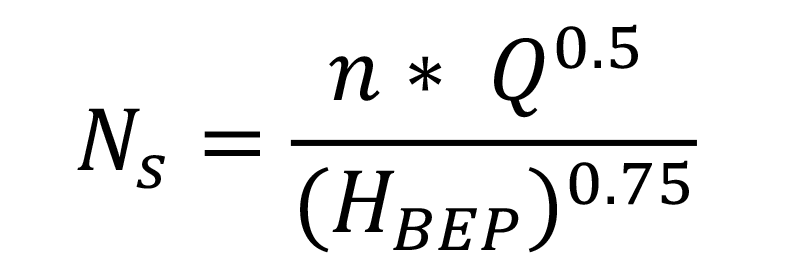It’s not unusual for folks to wax and wane during conversations about experiences that we have had or read about that push the limits of our experience. When I worked as a pump applications engineer, I used to pour over the catalogs and pump curves of all the various manufacturers and think about what each type of pump was capable of. One of the pumps that captured my imagination were the large axial flow pumps that could move hundreds of thousands of gallons per minute at low head pressure. These were the types of pumps that could pump water out of a whole city if something went awry. I prepared myself for the day that someone might call and need help specifying one of these marvels of engineering.
There were a few phone calls that came up over the years that warranted the movement of large quantities of water at low head; contractor dewatering for tunnel projects and emptying out a drydock to name a couple. Our service department worked on some pumps used for flood control where the volute was so big you could stand up in it. At the other end of the spectrum are pump applications that require both high flow and high head. An image that comes to my mind from younger days is seeing the harbor fireboats in full fountain plume.
As much as we can marvel in the feats of engineering that are flood control pumps and fireboats, we are reminded that they are created in response to events that impacted the life and safety of society. The most destructive river flood in the history of the United States happened in 1927 and is known as the Great Mississippi Flood of 1927. This event affected well over half a million people and was so impactful that it spurred an Act of Congress known as the Flood Control Act of 1928. It even captured national attention with the song recording “When the Levee Breaks” by Memphis Minnie in 1929. The fireboat I saw in the harbor when I was young inspired when I worked as a pump applications engineer.
As I would pour over the pump catalogs at my job and study pump curves, I learned about an attribute that defines the performance of a pump called specific speed. Specific speed is a relationship between flow rate, rotational speed and differential head, and is defined by the formula:

Where Ns is the specific speed, n is rotational shaft speed, Q is flow rate in gallons per minute, and H is the differential head at the best efficiency point of the pump curve. One example of a high specific speed would be the pumps used in New Orleans to help keep storm surge at bay. Based on my research, these pumps use 5,000 horsepower engines to spin at 150 rpm and pump 670,000 gpm at an estimated head of 40 feet. The specific speed for one of these pumps would be:

An example of a mid-range specific speed would be the pumps used on the Ralph J. Scott fireboat. While the pumps are rated for 1,700 gpm at 200 pounds per square inch, they are 4-stage pumps. This is an example that shows that specific speed is more of an impeller design attribute than a pump attribute. I divided the differential head of 460 by 4 and used 115 feet in the formula:

Notice how the specific speed goes down as the flow rate increases. This mid-range specific speed is characteristic of a Francis Vane type impeller that exhibits mixed radial and axial flow. The first type of pump we looked at, where you are just trying to get as much water over the wall as fast as you can is characteristic of an axial flow type impeller.
I did not have the opportunity to help with the pump application for the Ralph J. Scott (it was built in 1925), but I did work on another application for snow-making pumps. This type of pump impeller has specific speeds on the lower end since they have lower flow and higher pressure. These are characteristic of radial vane type impellers, common in in-line stackable pumps used for applications such as fire pump pressure maintenance (jockey pumps) and pressure boosting. If we look at the example for a jockey pump, sized to service a 1,000 gpm fire pump rated for 100 psi, our specific speed would be:

For the above example, I used 10 gpm, which is 1% of the rated flow of the fire pump and then estimated about 4 stages at 120 psi, dividing to get 30 psi ( or 30 x 2.31 = 70’ tdh ) per impeller stage.
The technical definition of specific speed is “the speed in revolutions per minute at which a geometrically similar impeller would operate if it were of such a size as to deliver one gallon per minute against one foot head.” Since most electric motors rotate at a nominal speed of either 1,800 or 3,600, it would make sense that the pump with the mixed flow impeller has a specific speed closer to this range. The axial flow impeller would have to be sped up to a high speed since it is designed for low head and the radial type impeller would need to be slowed down since it already inherently produces a higher head.
There are so many examples of engineering and technology that come about as response to events throughout our history. Some of those events spur songs that remind us of what we have been through and re-birth. Engineers and designers should remember to carry the banner of progress and “When the Levee breaks…. Let those pumps keep us safe and dry.”



